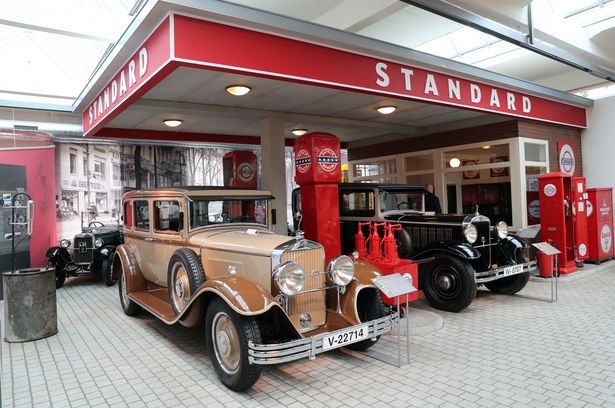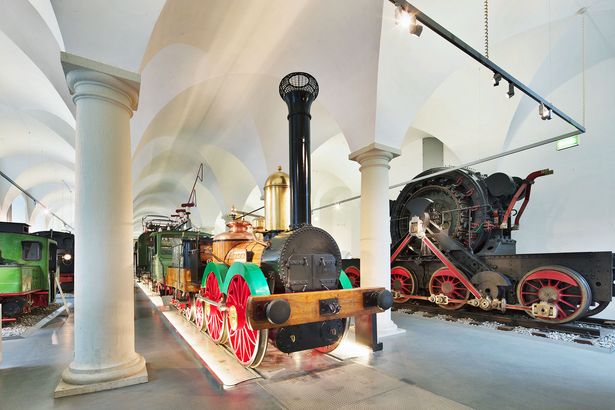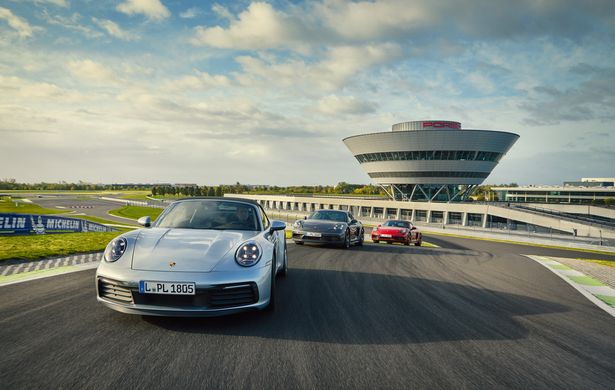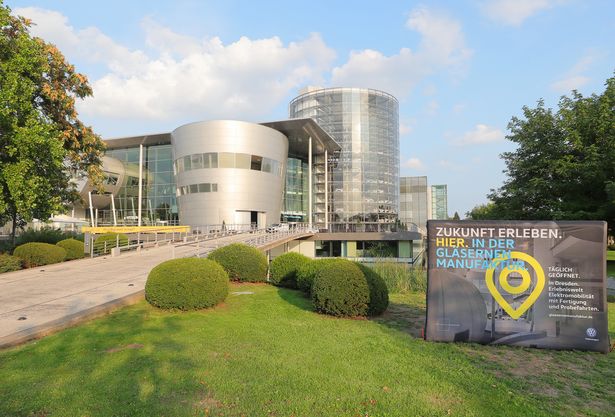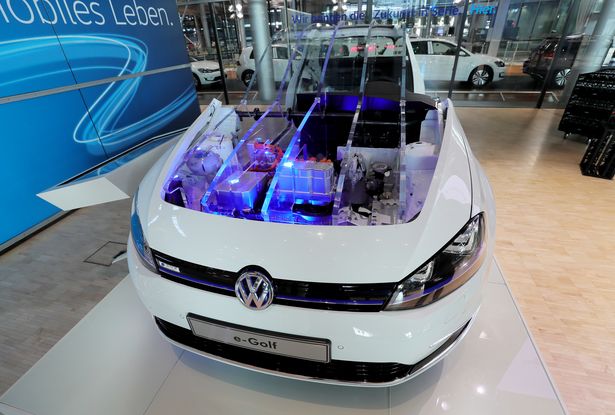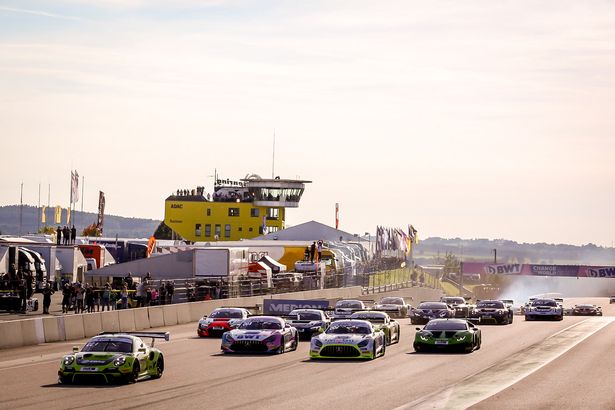More than 100 years ago, August Horch founded the world-famous Audi car brand in Zwickau. Legendary cars such as the "Silver Arrows" Grand Prix racing cars and the classic East German car Trabant originated in Zwickau. Today, about one in eight cars built in Germany comes from Saxony. With five vehicle and engine plants and countless suppliers, Saxony is a major automotive industry hub. There seems to be something in the region’s air that drives innovation in mobility, which might well be a special mix of traditional inventive spirit and modern start-up entrepreneurship. Not too surprising then that Volkswagen has turned its Zwickau site into a centre of excellence for e-mobility. All of this makes for a range of inspirational visitor experiences all around cars, be it historical, about manufacturing or with a view to the future of driving.
Car culture in Saxony
Facts and figures on cars in Saxony
Number of people visiting Volkswagen’s “Transparent Factory” in Dresden since its opening in 2001
Number of cars and vehicles exhibited in the August Horch Museum in Zwickau
Number of people working in Saxony’s car industry
„I endeavoured in all circumstances to build only strong and good cars.”
Car lovers delight: car museums in Saxony
TheAugust Horch Museumon the premises of the first Audi factory in Zwickau is a must-see: Discover the pioneering spirit and inventiveness of Zwickau's more than 115-year car-building tradition in permanent and special exhibitions.
The Stern garagesare among the oldest surviving multistorey garages in Germany and provide a fitting setting for the Saxon Motoring Museum in Chemnitz with around 200 exhibits from more than 70 manufacturers.
You prefer two wheels? TheMotorbike Museumin Augustusburg Castle houses one of the most important motorbike collections in Europe.
Dresden Transport Museuminvites you on a fascinating (time) journey into the world of mobility and the history of transport. Great family outing!
Less well-known but no less interesting: The history of commercial vehicle construction in Saxony is presented by the Saxon Commercial Vehicle Museum in Hartmannsdorf.
The Saxon Museum of Industry in Chemnitz offers an exciting insight into Saxony's wide-ranging industrial history including automotive engineering.
Look behind the scenes: car manufacturing in Saxony
BMW
BMW Group Plant Leipzig is one of the most cutting-edge and sustainable car plants in the world. Series production was launched in 2005, and today some 1,100 vehicles a day roll off the production lines. The current product portfolio comprises the BMW 1 Series, BMW 2 Series Gran Coupe, BMW 2 Series Active Tourer and the BMW i3. Past products include the ground-breaking i3 electric sports car. The spectacular central building was designed by star architect Zaha Hadid, re-interpreting the traditional office and replacing it with a “nerve-center” or “communication knot”. All movement around the manufacturing process is funneled through a space that overcomes the traditional white collar/blue collar division. Tours through the plant are available, offering a look behind the scenes.
Porsche
Porsche’s biggest plant is located in Leipzig and has been steadily expanded in recent years. Two of the iconic car makers hybrid models, Macan and Panamera, are manufactured here. But it is far more than a production facility. The diamond-shaped Experience Center with its combination of conference facilities for up to 680 guests, restaurant, modern equipment, guided tours of the production facilities and exciting driving events on tarmac or cross-country makes Porsche Leipzig also a unique location for events and incentives. The opportunity to drive a Porsche on the FIA-certified on-road circuit, as a "co-pilot" next to a professional Porsche instructor or directly behind the wheel, is a unique experience. The course is modelled on famous sections from racetracks around the world, for example Monza, Spa or Rio de Janeiro. And even aurochs and wild horses are at home in Leipzig, in the pastures of the dedicated off-road track. This 6-kilometre stretch can be tested with the Cayenne or the Macan.
Volkswagen
Volkswagen operates two car plants in Saxony and also one that produces engines. The so-called “Transparent Factory” in the city center of Dresden is considered to be the most unusual car factory in the world. Originally built for the production of the Phaeton luxury car, it is now a center for e-mobility, assembling electric cars, but also offering a wide range of related experiences. It offers guided tours for groups and individuals which take visitors straight to the production line, hosts events and has a restaurant where many culinary delights, including Volkswagen’s famous curry sausage, are served. The Zwickau plant, which offers guided tours for groups, has been fully converted for the production of electric vehicles of the entire Volkswagen Group. This means that for first time since before the war, Audi-branded cars are rolling off the production line. Audi had been founded in Zwickau in 1909 and the current facility is the successor to the original Audi plant which now serves as a museum.
The future of driving: e-mobility made in Saxony
With BMW, Porsche and Volkswagen producing their electric and hybrid cars in Saxony, the region is contributing to shaping the future of mobility in a significant way. Industry and research work hand in hand to drive new solutions forward.
Not to be missed: Volkswagen's “Transparent Factory” in Dresden offers unique insights into the production of the latest electric models!
Special tip: Sachsenring racing circuit
The sound of engines is music to the ears of true car fans: At the Sachsenring (meaning "Saxony circuit") racing circuit near Chemnitz, racing history comes to life. For almost 100 years, legendary car and motorcycle races have been held here. In 1927, a 9 kilometer or 6 miles circuit around the town of Hohenstein-Ernstthal was first used for a motorcycle race. Seven years later, it became the venue for the German Moto GP. After World War II, numerous motorcycle, car and even bicycle races took place there. After the German Reunification, the circuit was closed down since it did not comply with modern safety standards. But in 1995, in the former start and finish area, a new racetrack was opened as part of a training centre for drivers and racing drivers. In 1998, the German Moto GP returned to the Sachsenring, now attracting around 200,000 spectators every year. This event is so popular that, unlike at other race tracks, people not only attend the race itself, but also the training times. Other racing events have proved to be popular as well, especially the GT Masters car race. Today, Sachsenring is also more than just a racetrack, offering driver safety and sports driver training courses. The training centre also serves as an event location, and the buildings and the circuit can be rented in parts or as a whole.

